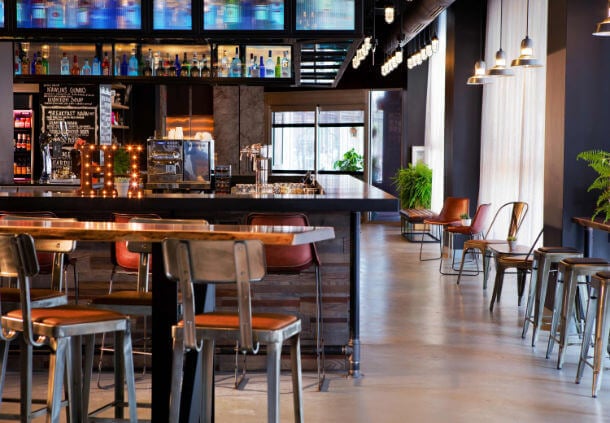Hotels at all levels are keeping an eye on the millennial generation, everything from what they want in guestroom and public space design to how they book their hotel rooms. Several new hotel brands (AccorHotels’ Jo&Joe, Marriott International’s Moxy) were specifically created around this generation.
According to the National Restaurant Association, restaurant operators are looking at everything—from how they use technology to what they serve on the menu to how they can make dining out more of an experience for their guests—to capture market share and entice the next generation of guests to come back.
To help operators gain insight into the minds (and stomachs) of millennials, the NRA’s new State of the Industry report polled members of the generation to see what they think about dining out. Here are the results:
According to the report, 66 percent of millennials say spending money on an experience like dining at a restaurant or some other activity is more important to them than purchasing an item from a store.
Related content: Meal Ticket: Concocting concepts to boost F&B returns
So what makes a millennial choose one restaurant over another? Here are a few discoveries discussed in the report:
- Technology is a big draw. Millennials are more likely than gen Xers or baby boomers to take advantage of and use technology when deciding where to dine.
- The ordering process. Millennials are more willing than older guests to use electronic kiosks or tablets to place orders at limited-service and sit-down restaurants.
- Looking at the menu online is key. Seventy-four percent of millennials and 68 percent of gen Xers claim that option drives their choice of one restaurant over another.

Besides technology, providing healthful and environmentally sustainable options also impacted their dining choices, according to the report.
- Eating healthfully makes a difference. Among millennials, 74 percent are more likely to dine at a restaurant if it has healthy options.
- The nearer, the better. Local sourcing is a factor in deciding where to dine for 70 percent of millennials.
- Serving up sustainability. Sixty-five percent of millennials choose restaurants based on whether it serves environmentally friendly food.
- Special needs, special tastes. Nearly 40 percent say availability of diet-specific food, like vegetarian or gluten-free items, affect their restaurant choices.
Hotel bars are also undergoing changes based on millennial preferences.
Kellie Sirna, principal at Studio 11 Design, told HOTEL MANAGEMENT that the biggest change in bar design is making the bar a more prominent part of the lobby. “We’re taking down walls between the bar and lobby, which in turn blurs the lines and brings the energy from the bar area into the lobby,” she said.
Some millennial-focused hotels are emphasizing the bar as the leading element of the lobby. The Moxy brand, for example, has eschewed the check-in desk entirely and combined it with the lobby bar, letting guests get their room key and a complimentary drink at the same time. “We like to think of ourselves as a bar with rooms upstairs,” said Vicki Poulos, global brand lead of Moxy Hotels.
